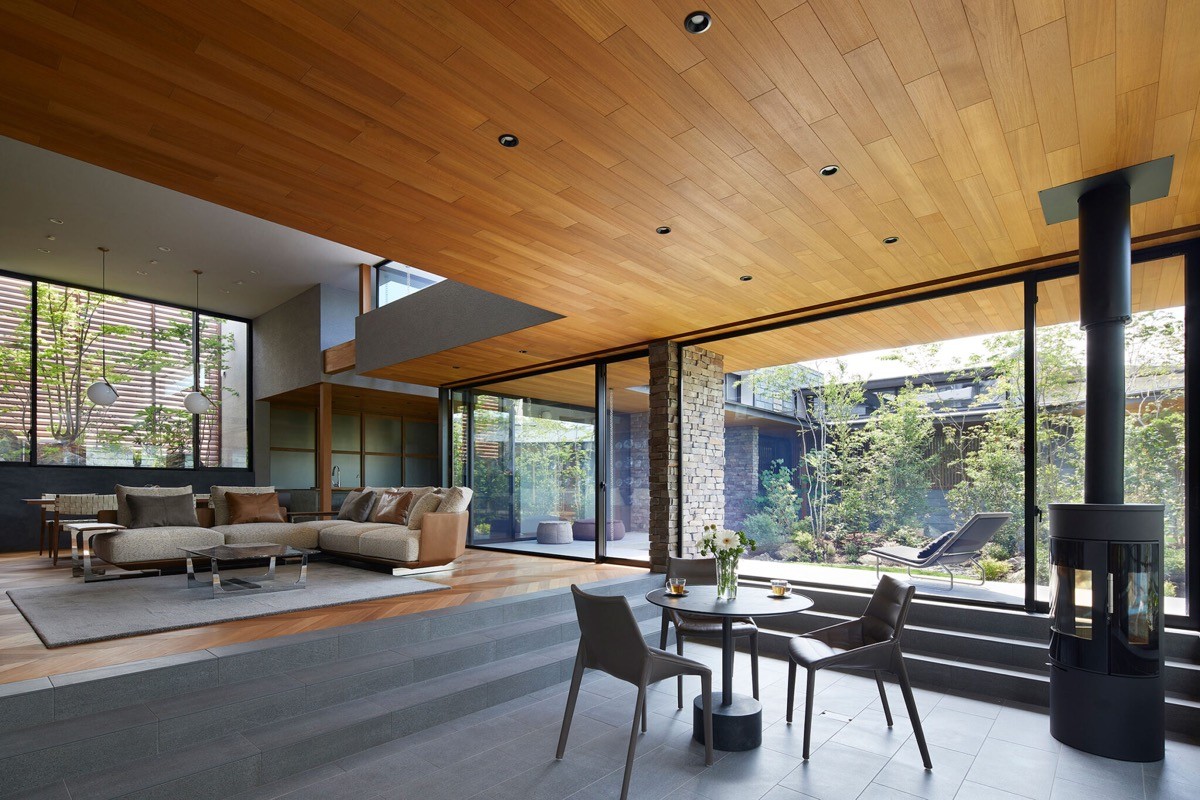Design Elements and Concepts: Modern Japanese House Interior

Modern japanese house interior – Japanese interior design embodies a unique blend of tradition and modernity, with key principles that guide the creation of serene and harmonious spaces. Natural materials, such as wood and stone, hold immense significance, evoking a sense of warmth and connection to nature. The concept of “wabi-sabi,” embracing the beauty of imperfection and the passage of time, deeply influences modern Japanese interiors, fostering an appreciation for the patina and authenticity of materials.
Modern Japanese house interiors exude a minimalist aesthetic, emphasizing clean lines, natural materials, and a seamless flow of indoor and outdoor spaces. To achieve this sophisticated design, consider consulting with a professional interior designer. Their expertise can guide you in creating a harmonious and functional space that embodies the essence of modern Japanese style.
Use of Natural Materials, Modern japanese house interior
Wood, in its various forms, is a cornerstone of Japanese interior design. Its warmth and versatility lend a sense of organic elegance to spaces. Stone, with its enduring presence and earthy hues, adds a touch of solidity and timelessness. Natural materials bring a sense of tranquility and balance to interiors, creating a harmonious connection between the built environment and the natural world.
The modern Japanese house interior is characterized by its simplicity and functionality, with a focus on natural materials and clean lines. While traditional Japanese homes often feature tatami mats and shoji screens, modern Japanese homes may incorporate elements of Western design, such as hardwood floors and built-in cabinetry.
One popular way to add a touch of warmth and personality to a modern Japanese home is to incorporate crochet home decor. Crochet home decor can be used to create a variety of items, from throws and pillows to wall hangings and baskets.
The soft textures and intricate patterns of crochet can add a touch of elegance to any room.
Wabi-Sabi
Wabi-sabi, a Japanese aesthetic philosophy, celebrates the beauty of imperfection and impermanence. In interior design, this translates into an appreciation for the patina of age, the quirks of handmade objects, and the acceptance of the natural aging process. Wabi-sabi interiors evoke a sense of authenticity and depth, encouraging a mindful appreciation of the present moment.
Spatial Organization and Functionality

Modern Japanese houses are designed to maximize space and functionality. The use of sliding doors, screens, and tatami mats creates flexible and adaptable living spaces. Traditional Japanese elements, such as the tokonoma, are also integrated into modern interiors.
Use of Sliding Doors, Screens, and Tatami Mats
Sliding doors and screens are used to divide and define spaces within a house. They can be opened up to create a large, open space or closed off to create smaller, more private spaces. Tatami mats are used to cover the floor and provide a comfortable and flexible seating surface. They can be easily moved around to create different configurations of space.
Integration of Traditional Japanese Elements
Traditional Japanese elements, such as the tokonoma, are often integrated into modern interiors. The tokonoma is a small alcove that is used to display a scroll, painting, or other work of art. It is a focal point of the room and adds a sense of tradition to the space.
Color Palette and Lighting

In modern Japanese house interiors, the color palette is typically neutral and monochromatic, with a focus on natural materials and textures. White, gray, and beige are common base colors, creating a sense of serenity and tranquility. Earth tones, such as browns, greens, and blues, are often incorporated to bring warmth and a connection to nature.
Natural light is highly valued in Japanese design, and large windows and sliding doors are used to maximize its presence. This natural light creates a sense of spaciousness and well-being, and it also helps to reduce energy consumption.
Artificial lighting is used to create ambiance and highlight architectural features. Recessed lighting, pendant lights, and wall sconces are commonly used to provide general illumination, while accent lighting is used to draw attention to specific areas or objects.
Color Palette
- Neutral and monochromatic color palette
- White, gray, and beige are common base colors
- Earth tones, such as browns, greens, and blues, are often incorporated
Natural Light
- Highly valued in Japanese design
- Large windows and sliding doors are used to maximize its presence
- Creates a sense of spaciousness and well-being
- Helps to reduce energy consumption
Artificial Lighting
- Used to create ambiance and highlight architectural features
- Recessed lighting, pendant lights, and wall sconces are commonly used for general illumination
- Accent lighting is used to draw attention to specific areas or objects